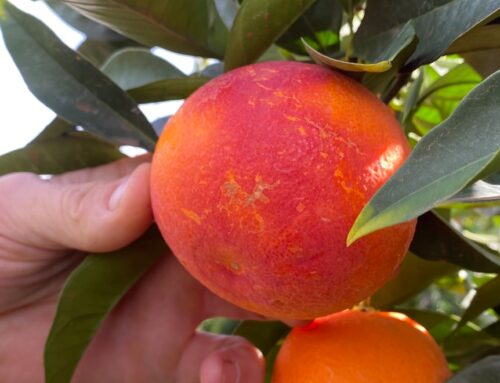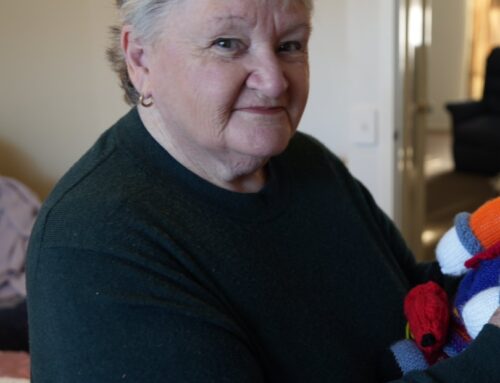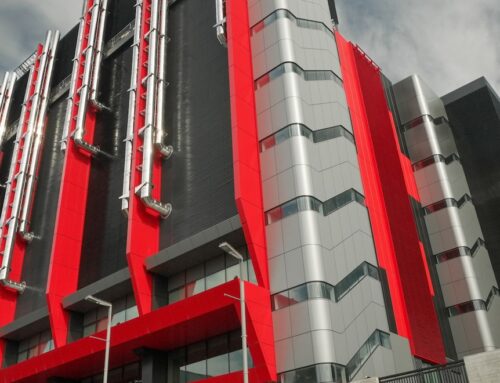Arid, flat, desolate.
To many people that is Australia’s Nullarbor, but in reality, the surface is pockmarked with holes that open the gateway to a subterranean wonderland.
“It’s the world’s largest arid limestone karst, 200,000 square kilometres of this enormous, emerged limestone platform that is completely honeycombed,” Stefan Eberhard told 7.30.
“Think of it like a sponge cake. It’s flat on top, but underneath it is riddled with holes.
“The entrances of the caves are one of the most spectacular parts of the cave system because they’re such a surprise.”
Eberhard, a cave diver and documentary filmmaker, has been using ropes to lower himself into these cave entrances for the past 30 years.
“Some of them might be 40 metres deep and 80 metres across a big giant black hole … those ropes might be 20 or 30 metres in depth,” he said.
In recent years, he’s been able to convince his wife Bronwen to join him.
“I grew up with a fear of heights … so I’ve had a real change of narrative in my later life,” she said.
“I just fell in love with the Nullarbor the first time I went. It feels like you’re crossing time and going into something very special.”
The limestone — which was once at the bottom of the ocean — is extremely porous. Any rain that falls on the surface doesn’t form lakes or rivers; instead, it seeps into the rock.
Over millions of years, that water gouged tunnels that stretch from where the rain fell to where the plain meets the cliffs overlooking the Great Australian Bight.
“Some of these tunnels are 20 to 30 metres in diameter … they’re like train tunnels barrelling underneath the desert, 90 metres below the surface,” Eberhard said.
“One of them is 35 kilometres long, snaking its way beneath the plain, and some of them are completely full of water and the only way to explore them is with diving equipment.
“You can’t feel a current, it’s moving so slowly … it’s like flying through space.”
While the thought of strapping yourself to an underwater scooter and navigating through unknown, pitch-black caves is terrifying to most people, cave experts — or speleologists — say only a tiny fraction of the caves have been documented, and the ‘thrill of exploration’ keeps bringing them back.
“There’s a remarkable diversity of cave-dwelling invertebrates on the Nullarbor which occur nowhere else in Australia or anywhere else in the world,” Stefan said.
“There’s a giant, blind cockroach, and it doesn’t run away like normal cockroaches. There’s a gigantic blind cave spider.
“About 20 years ago … cavers found a complete articulated skeleton of the famous marsupial lion.”
An ‘ideal site’ for renewables
Having dedicated themselves to bringing the little-known world of the Nullarbor caves to the attention of the public, the Eberhards say they’re now in a fight to save them.
A 15,000-square-kilometre section of the Nullarbor in the very far south-west of Western Australia has been earmarked as the site of one of the world’s largest renewable energy projects: The Western Green Energy Hub.
The proposal is to build 25 million solar panels and 3,000 wind turbines, capable of generating 50 gigawatts of electricity.
This energy will then be used to create 3.5 million tonnes of hydrogen each year.
“Our ultra-scale hydrogen project requires large, reliable and consistent amounts of electricity to ‘feed’ electrolysers,” a Western Green Energy Hub (WGEH) spokesperson said.
“The location offers high diurnal sun and wind loadings; is relatively unencumbered; and has road, rail and sea access possibilities.”
The developers say green hydrogen is crucial to Australia’s transition away from fossil fuels, as it provides a storable and transferable alternative.
However, the Eberhards say the price to pay will be the destruction of parts of the cave system.
“The hard limestone cap rock, which is very hard, it’s only one to two metres thick, though beneath that it’s really quite soft,” Stefan Eberhard said.
“Constructing these massive things is like trying to put bricks on a pavlova.
“What’s at stake here? Too much. This is World Heritage-quality karst.”
WGEH believes the project and the caves can co-exist, and it will do all it can to preserve them.
“WGEH advocates for the ‘avoidance of impact’, which would also apply to any caves in our project area, and to the karst system more generally.
“We continue karst system and cave mapping to ensure that we isolate project ‘no- go’ areas.”
It says any visual impact can be minimised thanks to the sheer size of the footprint.
“Wind turbines will be located on the Hampton Tablelands, set back at least 15 kilometres from the escarpment, which itself is some distance away from the Eyre Highway.
“Turbines will be located around 2.5 kilometres apart, with flexibility on each specific siting.”
Deal on the table for native title holders
There are three partners to the proposed development: Singapore-based Intercontinental Energy, CWP Global and Mirning Green Energy Limited.
The Mirning are the traditional owners of the Nullarbor, and Mirning Green Energy is the commercial arm of the Mirning Traditional Lands Aboriginal Corporation (MTLAC).
In 2017 the Mirning People were granted native title over the land on which the developers now want to build, which means before any development can go ahead, an Indigenous Land Use Agreement must be negotiated.
“Our cave systems are our storylines,” MTLAC chair Shilloh Peel said.
“Each family is connected to each cave, as well as the rock holes that provide water to the caves.
“We need to bring our people along with us … and we would have to make sure that all our cultural sites, heritage sites are protected.”
The current proposal is for Mirning Green Energy to be given a permanent seat on the board, to have a 10 per cent stake in the project, and have the option of securing majority ownership in 50 years after a financial investment decision is made.
Ms Peel and the Mirning people must therefore balance any potential risk to their cultural sites with clear financial incentives.
“Economically, these things are good for our people, [we will] get a rangers program up and running,” Ms Peel said.
“Just to have that sense of people going back to country working for country and being on country.”
WGEH says this is the only site it is considering, partly because of its ability to partner with the Mirning in exchange for the use of the land.
A financial commitment to the project isn’t due until 2029, and an agreement with the Mirning Traditional Lands Aboriginal Corporation is one of many hurdles.
“Our Mirning community, we are vast and wide, but they will come together and work these processes,” Ms Peel said.
“They will have the final decision.”
Watch 7.30, Mondays to Thursdays 7:30pm on ABC iview and ABC TV
Posted , updated




